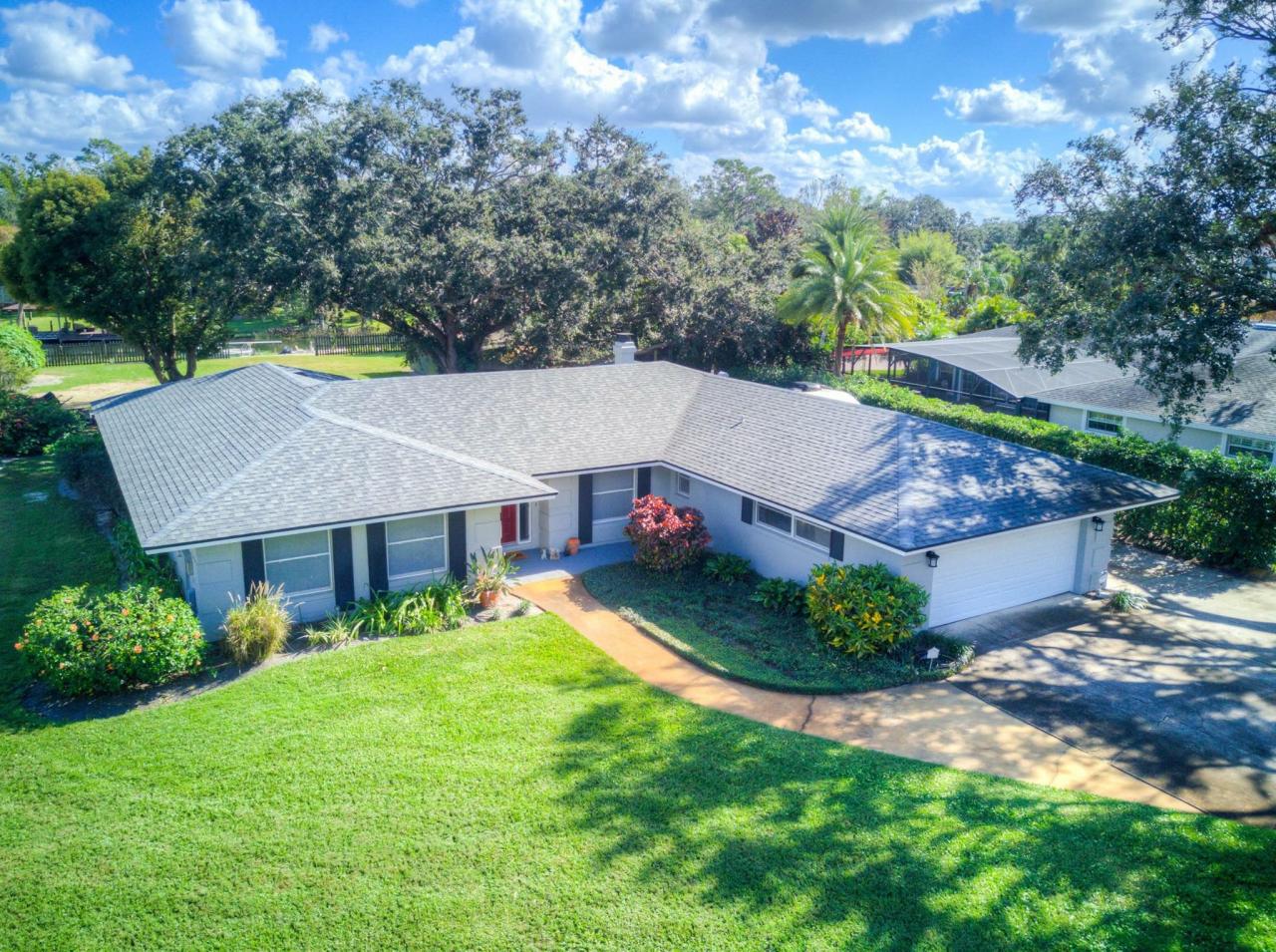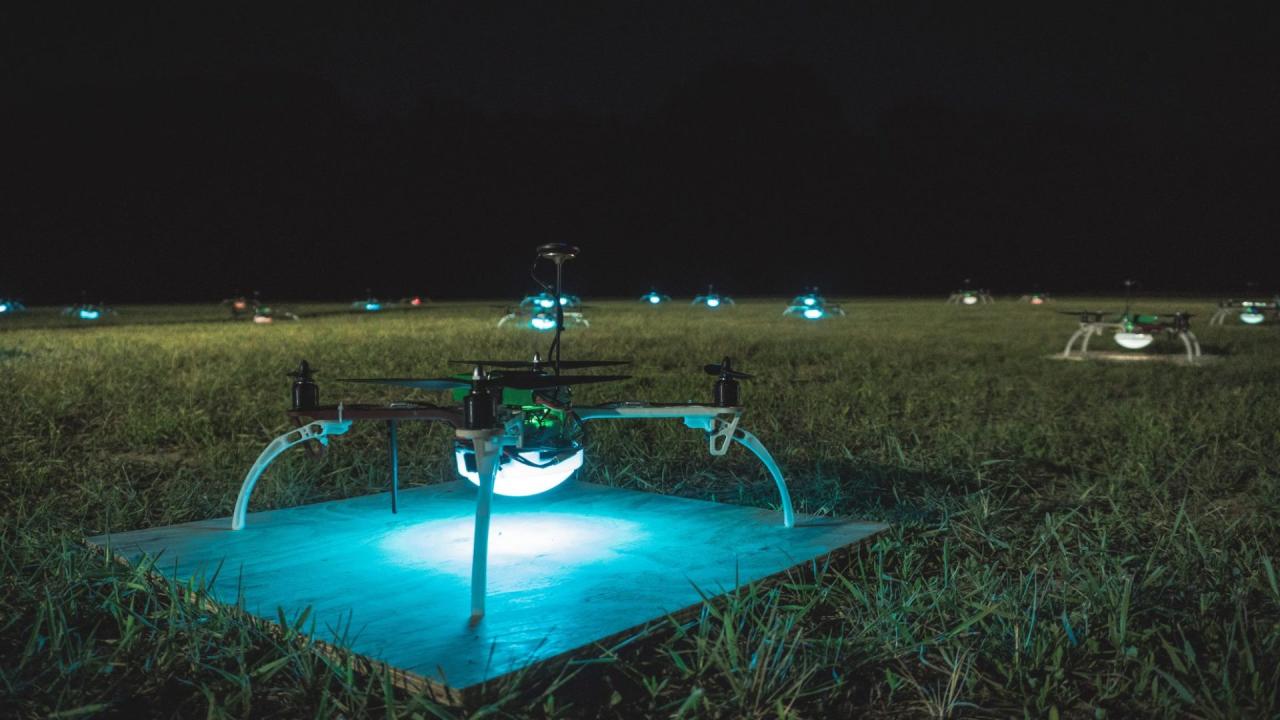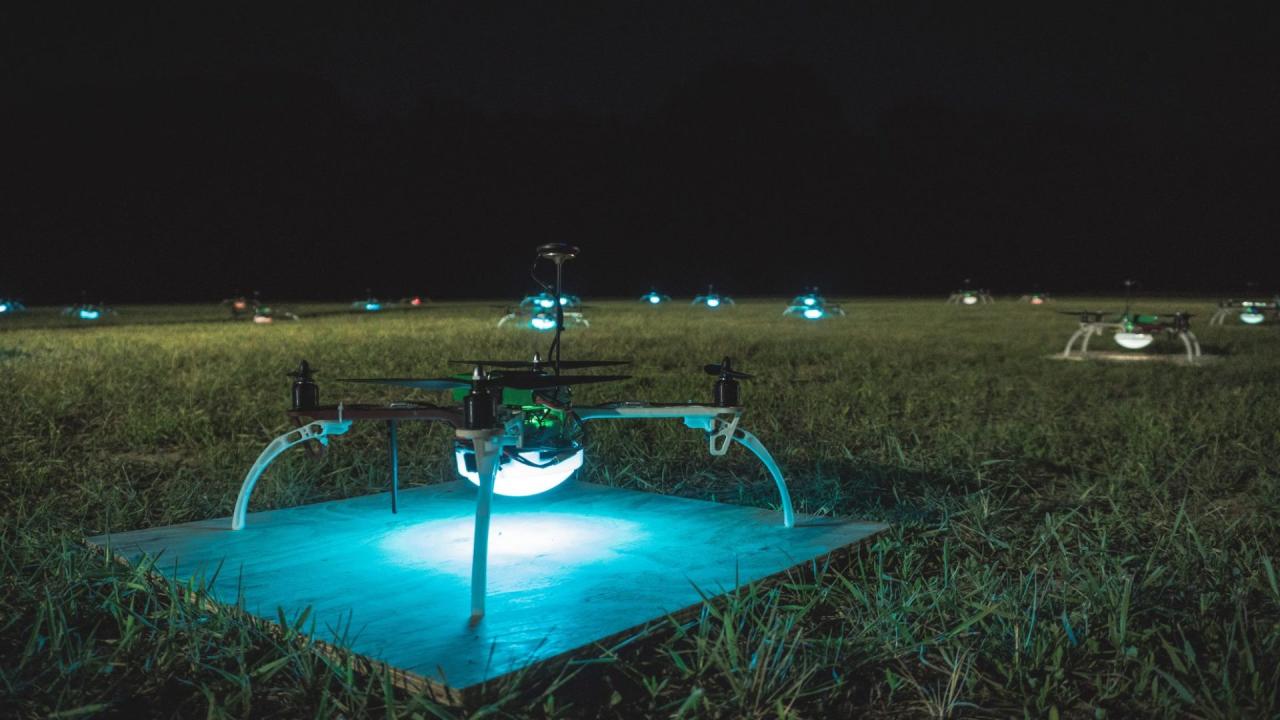Orlando drone show accident: A spectacular drone display turned disastrous. This event raises critical questions about safety regulations, technological reliability, and human error in the rapidly expanding world of drone shows. We’ll explore the incident’s details, examining the contributing factors and exploring how similar accidents might be prevented in the future. Get ready to delve into the technical, human, and regulatory aspects of this captivating and cautionary tale.
This analysis will cover everything from the specific drones used and the timeline of events to the regulatory landscape governing drone operations in Orlando and beyond. We’ll examine potential technical malfunctions, human errors, and the effectiveness of safety protocols. Finally, we’ll consider the public’s reaction, the post-accident investigation, and the lessons learned to improve drone show safety.
Orlando Drone Show Accident: A Comprehensive Analysis

The unfortunate drone show accident in Orlando serves as a stark reminder of the potential risks associated with large-scale drone operations. This analysis delves into the circumstances surrounding the incident, exploring regulatory compliance, technological factors, human error, safety protocols, public perception, and the post-accident investigation. The goal is to understand what happened, identify areas for improvement, and contribute to safer drone show practices in the future.
Accident Overview
The accident involved a swarm of approximately 50 drones performing a choreographed light show over a major Orlando venue. The drones, reportedly commercially available quadcopters with GPS and obstacle avoidance systems, malfunctioned during the performance. A specific timeline isn’t publicly available, but witness accounts suggest a sudden loss of control, with multiple drones descending erratically and colliding with each other and possibly ground structures.
While precise details about injuries and property damage remain under investigation, reports indicated minor injuries to spectators from falling debris and some structural damage to nearby buildings. The specific drone models and their exact specifications are yet to be officially released pending the ongoing investigation.
Regulatory Compliance
Drone regulations in Orlando, Florida, generally follow Federal Aviation Administration (FAA) guidelines, requiring pilot certification, registration of drones, and adherence to airspace restrictions. Potential violations in this case might include insufficient redundancy in the drone control system, inadequate safety protocols for a large-scale show, and potentially a lack of appropriate insurance coverage for the event. Comparing Orlando’s regulations to those of other major cities hosting drone shows reveals a common framework, but variations exist in specific permitting requirements and emergency response plans.
The licensing and certification requirements for drone pilots conducting public displays usually involve a rigorous process that includes flight training, safety knowledge, and practical examinations, however the specifics of whether these were met in this case are under investigation.
Technological Factors

Several technical malfunctions could have contributed to the accident. A potential scenario involves a GPS signal loss leading to uncontrolled descent, compounded by a simultaneous failure in the obstacle avoidance system. Hardware failures such as malfunctioning motors or battery issues could also have played a role. Software glitches, particularly in the communication system between the drones and the control station, could have caused synchronization problems and cascading failures.
The drones’ flight control systems, while typically robust, can be vulnerable to interference, software bugs, and hardware failures, especially when operating in a complex, synchronized swarm.
Human Factors, Orlando drone show accident
Human error could have significantly influenced the accident. Inadequate pilot training, insufficient pre-flight checks, and poor risk assessment by organizers are potential factors. Large-scale drone operations require highly skilled pilots with extensive experience in swarm management and emergency procedures. Best practices include rigorous training programs, regular maintenance checks, and redundancy in both hardware and software systems. The responsibilities of the pilot, show organizers, and other personnel involve meticulous planning, risk mitigation, and adherence to safety protocols.
Hey, so you heard about that crazy Orlando drone show accident, right? It’s a pretty wild story, and if you want the full lowdown, check out this article detailing the incident: orlando drone show accident. Seriously, the details are nuts; it makes you think twice about large-scale drone displays. The Orlando drone show accident really highlights the potential risks involved.
Safety Procedures and Protocols
A comparison of safety procedures used in the Orlando drone show with industry best practices is crucial. This comparison highlights areas needing improvement. Emergency response procedures implemented after the accident likely involved local emergency services, but a detailed analysis of their effectiveness and coordination needs to be conducted.
| Aspect | Orlando Show Procedures | Industry Best Practices | Gap Analysis |
|---|---|---|---|
| Pre-flight Checks | (Details unavailable pending investigation) | Comprehensive system checks, including battery levels, motor function, GPS signal strength, and communication system integrity. | Potential gap in thoroughness of pre-flight checks. |
| Redundancy Systems | (Details unavailable pending investigation) | Multiple independent control systems, backup power sources, and fail-safe mechanisms. | Potential gap in redundancy and fail-safe measures. |
| Emergency Response Plan | (Details unavailable pending investigation) | Clear communication protocols, designated emergency personnel, and procedures for drone retrieval and crowd control. | Potential gap in preparedness and response coordination. |
| Pilot Training | (Details unavailable pending investigation) | Extensive training in swarm management, emergency procedures, and risk mitigation. | Potential gap in the level and quality of pilot training. |
Improvements in safety protocols could involve stricter adherence to FAA regulations, more rigorous pilot training, implementation of redundant systems, and development of improved emergency response plans. Pre-flight checks should be comprehensive and meticulously documented.
Public Perception and Impact

The accident negatively impacted public perception of drone safety and technology. Media coverage significantly shaped public opinion, highlighting both the potential benefits and risks of drone shows. The incident might lead to increased scrutiny of regulations and a demand for enhanced safety protocols. Changes in public policy might involve stricter licensing requirements, improved safety standards, and potentially limitations on the scale and location of drone shows.
Post-Accident Investigation
The investigation will likely involve a thorough examination of the drones, flight data recorders (if available), communication logs, and witness statements. Data analysis will focus on identifying the root causes of the accident, including technological malfunctions, human errors, and regulatory compliance issues. Recommendations for improving drone show safety will be based on the investigation’s findings, potentially involving improved technology, stricter regulations, and enhanced training programs.
Determining liability and assigning responsibility will involve legal processes and potentially expert testimony.
So, that Orlando drone show accident got everyone talking about safety protocols, right? It made me think about other similar incidents, like that drone crash in Paris which highlighted the importance of redundancy systems. Ultimately, both incidents underscore the need for better regulations and improved technology to prevent future mishaps in drone shows and other aerial displays.
Ultimate Conclusion

The Orlando drone show accident serves as a stark reminder of the potential risks associated with large-scale drone operations. While drone technology offers incredible possibilities for entertainment and other applications, robust safety regulations, thorough pilot training, and rigorous pre-flight checks are paramount. By learning from this incident, we can work towards a future where drone shows are both spectacular and safe.
The investigation’s findings and subsequent policy changes will hopefully shape safer practices across the industry, ensuring similar incidents are avoided.
Query Resolution
What type of drones were involved in the accident?
This will be detailed in the accident overview section, specifying the model and manufacturer.
Were there any arrests made following the accident?
That Orlando drone show accident got everyone talking, right? It seems a lot of the chatter centers around the technical issues, and you can read more about the specifics of the orlando drone show malfunction if you’re interested in the engineering side of things. Ultimately, though, the accident highlights the importance of safety protocols in large-scale drone displays.
The details of any legal proceedings will be covered in the post-accident investigation section.
What was the estimated cost of the damage?
The financial impact of the accident, including property damage, will be included in the accident overview.
How did the media portray the accident?
The public perception and media coverage will be analyzed in the relevant section, discussing the impact on public opinion.
